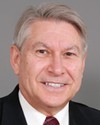As far as remuneration is concerned, it is difficult to determine what is adequate. What may be adequate in certain circumstances may not be in others. Here in Canada, we have adopted a formula that calculates the royalties payable by licensees to patentees based on the level of development of the importing country. When a licensee must calculate the royalties owing to the patentee, he consults the United Nations' list of developing countries and does his calculations on the basis of the country's ranking on the list.
For example, Sierra Leone is the least developed country on the list. It ranks 176th among the 176 countries listed. According to the formula established under the regulations, royalties of .02% would be payable in this case. If the country ranked first on the same list, the amount would be around 4%, which would be the highest rate.
Canada is not alone is using this formula. Although we developed it, Switzerland has adopted it as well. I believe other European nations have set royalty levels at 4%. As you can see, the rate falls somewhere between .02% and 4%. Our rates are in the same ballpark. Admittedly, from 1969 to 1992, Canada had a mandatory pharmaceutical licensing regime in place which provided for royalties of 4% to be paid in a business context.
In terms of using the waiver for non- commercial purposes, Canada has endeavoured to maintain the obligation set out in sections 21.16 and 21.17. Pursuant to these provisions, a patentee may challenge the granting of a licence to a generic drug manufacturer if the price of the product is equal to or greater than 25% of the average price of the equivalent product sold in Canada by the patentee. This is how Canada applies this provision. Of the eight countries that have implemented the decision, Canada is the only one to have brought in a specific provision for upholding this obligation.





